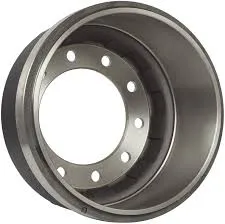
-
 Afrikaans
Afrikaans -
 Albanian
Albanian -
 Amharic
Amharic -
 Arabic
Arabic -
 Armenian
Armenian -
 Azerbaijani
Azerbaijani -
 Basque
Basque -
 Belarusian
Belarusian -
 Bengali
Bengali -
 Bosnian
Bosnian -
 Bulgarian
Bulgarian -
 Catalan
Catalan -
 Cebuano
Cebuano -
 Corsican
Corsican -
 Croatian
Croatian -
 Czech
Czech -
 Danish
Danish -
 Dutch
Dutch -
 English
English -
 Esperanto
Esperanto -
 Estonian
Estonian -
 Finnish
Finnish -
 French
French -
 Frisian
Frisian -
 Galician
Galician -
 Georgian
Georgian -
 German
German -
 Greek
Greek -
 Gujarati
Gujarati -
 Haitian Creole
Haitian Creole -
 hausa
hausa -
 hawaiian
hawaiian -
 Hebrew
Hebrew -
 Hindi
Hindi -
 Miao
Miao -
 Hungarian
Hungarian -
 Icelandic
Icelandic -
 igbo
igbo -
 Indonesian
Indonesian -
 irish
irish -
 Italian
Italian -
 Japanese
Japanese -
 Javanese
Javanese -
 Kannada
Kannada -
 kazakh
kazakh -
 Khmer
Khmer -
 Rwandese
Rwandese -
 Korean
Korean -
 Kurdish
Kurdish -
 Kyrgyz
Kyrgyz -
 Lao
Lao -
 Latin
Latin -
 Latvian
Latvian -
 Lithuanian
Lithuanian -
 Luxembourgish
Luxembourgish -
 Macedonian
Macedonian -
 Malgashi
Malgashi -
 Malay
Malay -
 Malayalam
Malayalam -
 Maltese
Maltese -
 Maori
Maori -
 Marathi
Marathi -
 Mongolian
Mongolian -
 Myanmar
Myanmar -
 Nepali
Nepali -
 Norwegian
Norwegian -
 Norwegian
Norwegian -
 Occitan
Occitan -
 Pashto
Pashto -
 Persian
Persian -
 Polish
Polish -
 Portuguese
Portuguese -
 Punjabi
Punjabi -
 Romanian
Romanian -
 Russian
Russian -
 Samoan
Samoan -
 Scottish Gaelic
Scottish Gaelic -
 Serbian
Serbian -
 Sesotho
Sesotho -
 Shona
Shona -
 Sindhi
Sindhi -
 Sinhala
Sinhala -
 Slovak
Slovak -
 Slovenian
Slovenian -
 Somali
Somali -
 Spanish
Spanish -
 Sundanese
Sundanese -
 Swahili
Swahili -
 Swedish
Swedish -
 Tagalog
Tagalog -
 Tajik
Tajik -
 Tamil
Tamil -
 Tatar
Tatar -
 Telugu
Telugu -
 Thai
Thai -
 Turkish
Turkish -
 Turkmen
Turkmen -
 Ukrainian
Ukrainian -
 Urdu
Urdu -
 Uighur
Uighur -
 Uzbek
Uzbek -
 Vietnamese
Vietnamese -
 Welsh
Welsh -
 Bantu
Bantu -
 Yiddish
Yiddish -
 Yoruba
Yoruba -
 Zulu
Zulu
ev drum brakes
Understanding EV Drum Brakes A Key Component in Electric Vehicles
As the automotive industry rapidly shifts towards electric vehicles (EVs), the components that make up these cars are receiving significant attention. One such component that is becoming increasingly relevant is the drum brake system. While disc brakes are often lauded for their performance, drum brakes offer unique advantages that can be particularly beneficial in the context of electric vehicles.
What Are Drum Brakes?
Drum brakes are a type of brake system that uses friction to slow down or stop a vehicle. They consist of a cylindrical drum that rotates with the wheel and brake shoes that are pressed against the inner surface of the drum when braking is applied. This design allows for a larger surface area for friction, resulting in effective braking performance. Despite being overshadowed by disc brakes in high-performance applications, drum brakes have been widely used in various vehicles for decades.
Advantages of Drum Brakes for EVs
1. Cost-Effectiveness One of the primary advantages of using drum brakes in electric vehicles is their lower manufacturing and maintenance costs. Drum brakes generally require fewer materials to produce compared to disc brakes. As EV manufacturers strive to keep costs down to make their vehicles more accessible, drum brakes can help achieve this goal.
2. Simplicity and Reliability The design of drum brakes is simpler than that of disc brakes, leading to fewer components that can wear out or fail. This reliability is crucial for electric vehicles that aim to provide consistent and hassle-free performance for drivers. With fewer parts to maintain, drum brakes can enhance the overall lifespan of the braking system, making them an appealing choice for EV designers.
ev drum brakes

3. Regenerative Braking Compatibility Electric vehicles are equipped with regenerative braking systems that recover energy during braking, which can be stored in the battery and used later. Drum brakes can complement this system effectively. Their ability to provide smooth and consistent braking can work in tandem with regenerative braking, ensuring a seamless transition between the two systems. This integration can contribute to enhanced energy efficiency in EVs.
4. Performance in Certain Conditions While disc brakes tend to outperform drum brakes in extreme conditions, drum brakes can offer sufficient performance in everyday driving scenarios. For urban EVs that experience frequent stop-and-go driving, drum brakes can be more than adequate, making them an ideal fit for many electric vehicles aimed at city dwellers.
Challenges and Considerations
Despite their advantages, drum brakes also present challenges. They are known for having longer stopping distances under high-performance conditions compared to disc brakes. Additionally, they can be prone to overheating during frequent heavy braking, which may limit their effectiveness in high-speed driving scenarios. As such, vehicle manufacturers often weigh the benefits of drums against these limitations in their designs.
Conclusion
As electric vehicles become more prevalent on our roads, the choice of braking systems will be a critical consideration for manufacturers and consumers alike. EV drum brakes, with their cost-effectiveness, reliability, and compatibility with regenerative systems, present a compelling option for many applications. While they may not outperform disc brakes in every category, their advantages make them a worthy consideration for the future of electric vehicle design. Understanding the nuances of these braking systems can help consumers make informed choices as they navigate the evolving landscape of electric mobility.
-
What Are Drum BrakesNewsJul.07,2025
-
Understanding Brake Drum MaterialNewsJul.07,2025
-
Semi-Trailer Brake Drum: A Key Component for Extreme Loads and Long-Distance TransportNewsJul.07,2025
-
Drum Brake Pads for SaleNewsJul.07,2025
-
Brake Drums for SaleNewsJul.07,2025
-
Brake Drum ManufacturerNewsJul.07,2025
-
Aluminum Brake Drums: The Future of High-Performance CarsNewsJul.07,2025
